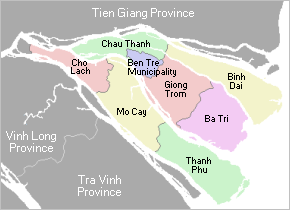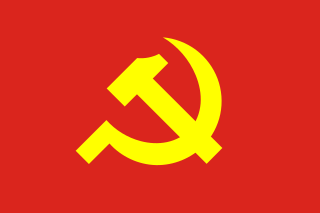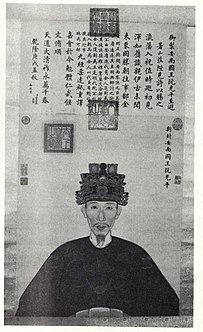Trương Tấn Bửu (張 進 寶, 1752–1827), also called Trương Tấn Long (張 進 隆), was a general and official of the Nguyễn dynasty of Vietnam He was born in 1752 in Thạch Phú Đông, Giồng Trôm District, Bến Tre Province. In 1797, he joined the army of Nguyễn Ánh and became a đốc chiêu cai cơ (commander). Later, he became the Deputy Marshal of the Nguyễn's Army's Front Division. In 1802, after the unification of Vietnam, he became the military commander of Nguyen's armies in northern Vietnam and later the Viceroy of Bắc Thành. In 1816, he became the Deputy Marshal of the Nguyễn Army's Central Division which guarding Huế, the capital of Nguyễn dynasty. In 1823, he took up the post of Viceroy of Gia Định replacing Lê Văn Duyệt. Shortly thereafter, he retired because of illness and then died in 1827 at the age of 75.

The Nguyễn dynasty or House of Nguyễn was the final imperial family of Vietnam. Their ancestral line can be traced back to the beginning of the Common Era. However, only by the mid-sixteenth century the most ambitious family branch, the Nguyễn Lords had risen to conquer, control and establish feudal rule over large territory.

Vietnam, officially the Socialist Republic of Vietnam, is the easternmost country on the Indochina Peninsula. With an estimated 94.6 million inhabitants as of 2016, it is the 15th most populous country in the world. Vietnam is bordered by China to the north, Laos and Cambodia to the west, part of Thailand to the southwest, and the Philippines, Malaysia, and Indonesia across the South China Sea to the east and southeast. Its capital city has been Hanoi since the reunification of North and South Vietnam in 1976, while its most populous city is Ho Chi Minh City.

Giồng Trôm is a rural district of Bến Tre Province in the Mekong Delta region of Vietnam. As of 2003 the district had a population of 186,719. The district covers an area of 311 km2. The district capital lies at Giồng Trôm. This district is the home country of Phan Văn Trị. The commune Mỹ Thạnh has the famous speciality: Mỹ Lồng rice paper.














